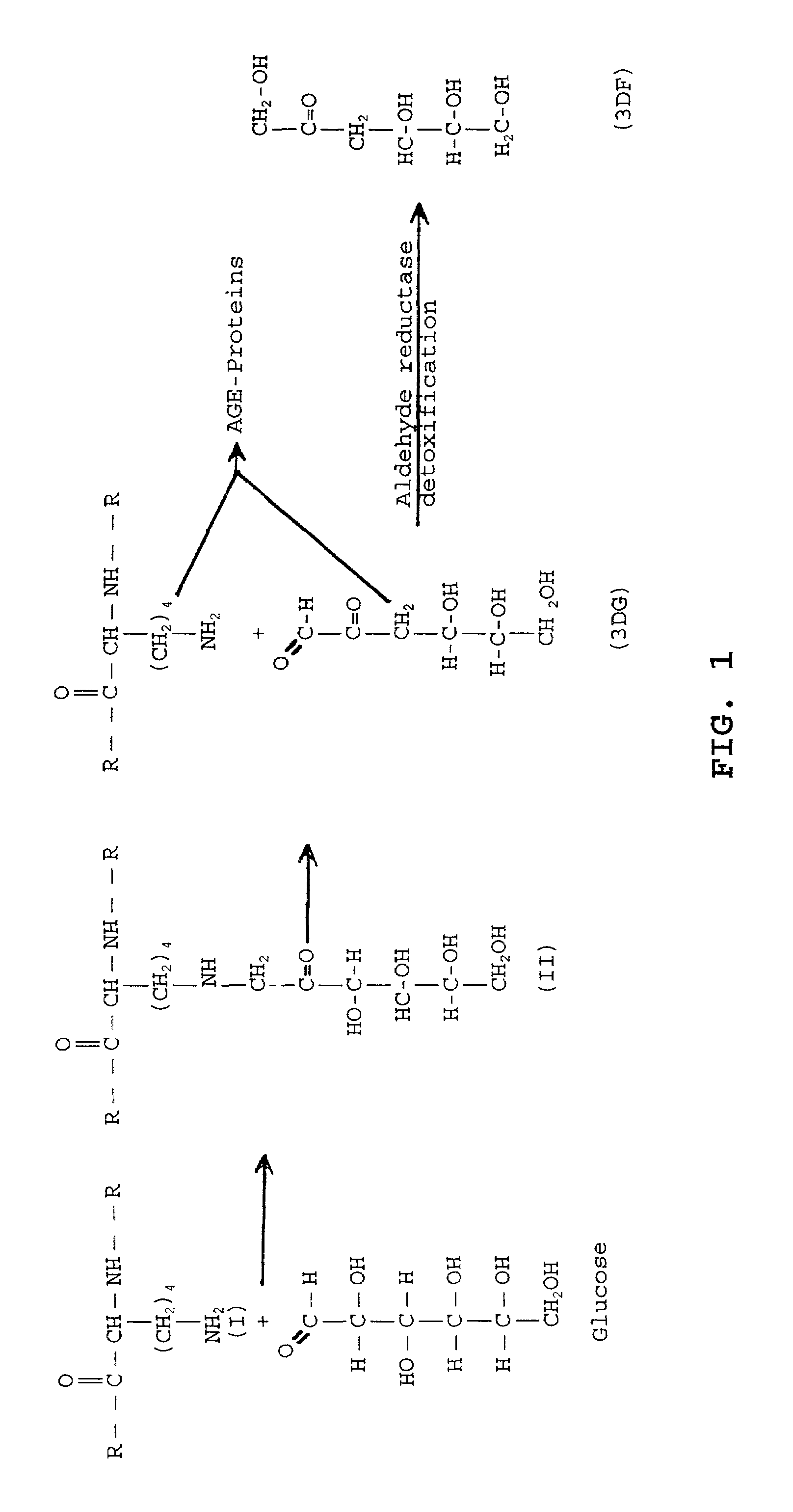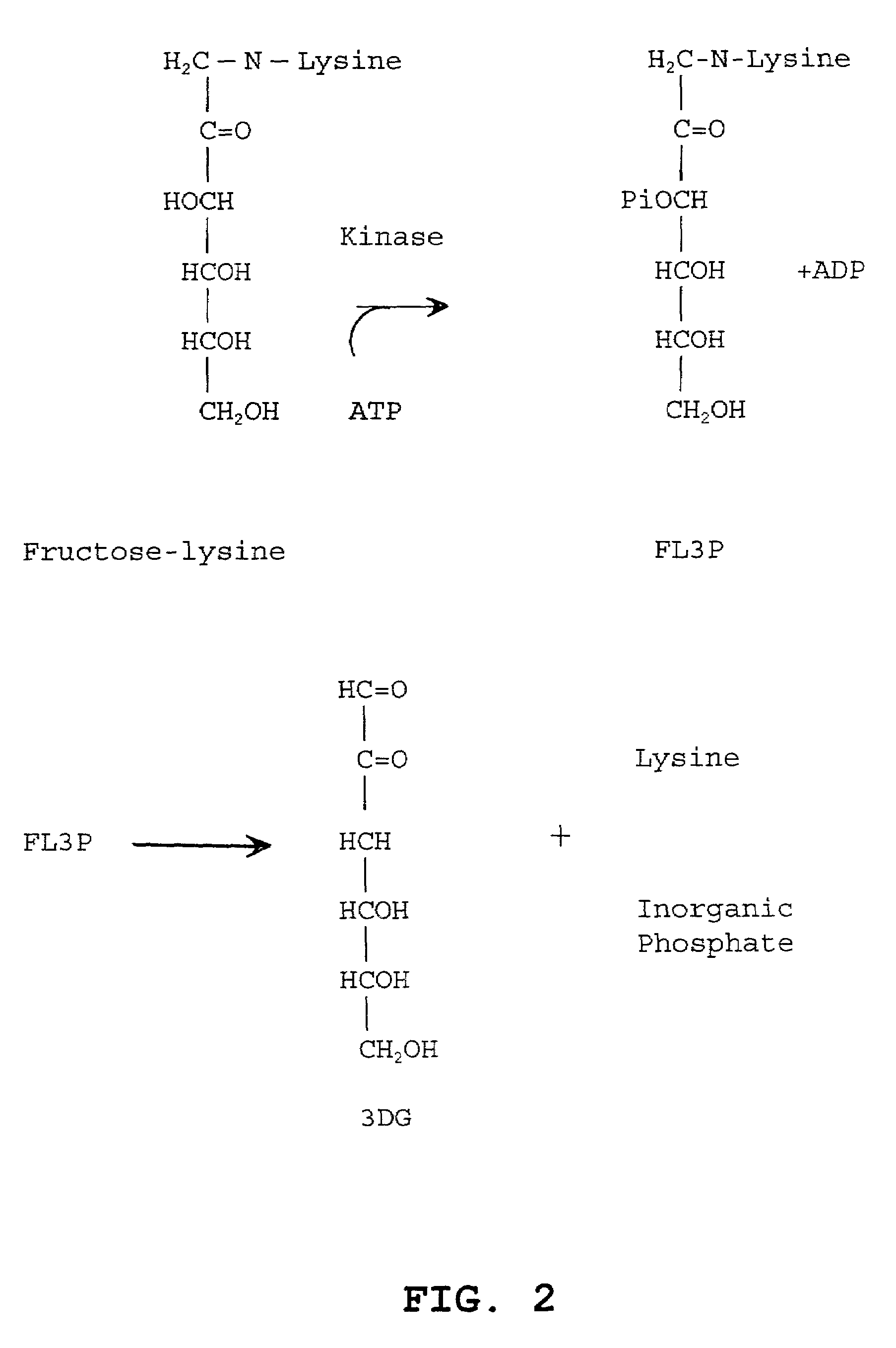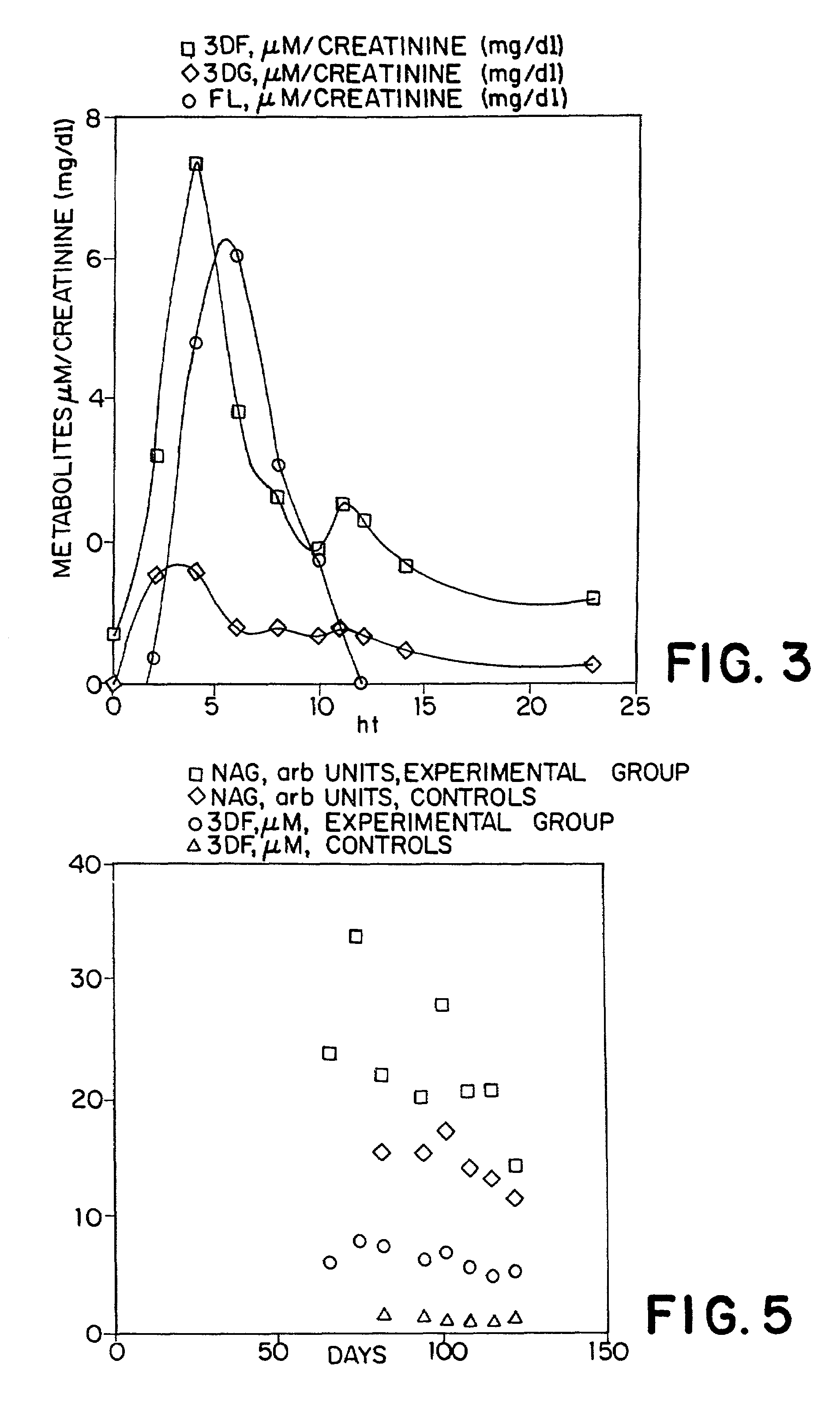Compounds and methods for treating glycogen storage disease and other pathological conditions resulting from formation of age-proteins
a glycogen storage and age-protein technology, applied in the field of therapeutic agents, can solve the problems of premature deterioration of the elasticity and vital capacity of the lung, adverse effects aldehyde reductase, and premature deterioration of the efficiency of at least one of these enzymes, and achieve the effects of preventing, reducing, or delaying the onset of carcinoma, and reducing susceptibility to cancer
- Summary
- Abstract
- Description
- Claims
- Application Information
AI Technical Summary
Benefits of technology
Problems solved by technology
Method used
Image
Examples
example 1
ISOLATION AND IDENTIFICATION OF FL3P
[0142]A 31P NMR analysis of a perchloric acid extract of diabetic rat kidneys showed a new sugar monophosphate resonance at 6.24 ppm which is not observed in non-kidney tissue and is present at greatly reduced levels in non-diabetic kidney. The compound responsible for the observed resonance was isolated by chromatography of the extract on a microcrytalline cellulose column using 1-butanol-acetic acid-water (5:2:3) as eluent. The structure was determined by proton 2D COSY to be fructose-lysine 3-phosphate. This was later confirmed by injecting animals with FL, prepared as previously described (Finot and Mauson, Helv. Chim. Acta, 52: 1488 (1969)), and showing direct phosphorylation to FL3P. Using FL specifically deuterated in position-3 confirmed the position of the phosphate at carbon-3. This was performed by analyzing the 31P NMR spectra both coupled and decoupled. The normal P-O-C-H coupling produces a doublet in FL3P with a J value of 10.3 Hz, ...
example 2
Synthesis of FL3P
[0143]1 mmol of dibenzyl-glucose 3-phosphate and 0.25 mmol of α-carbobenzoxy-lysine was refluxed in 50 ml of MeOH for 3 hours. The solution was diluted with 100 ml water and chromatographed on a Dow-50 column (2.5×20 cm) in the pyridinium form and eluted first with water (200 ml) and then with 600 ml buffer (0.1M pyridine and 0.3M acetic acid). The target compound eluted at the end of the water wash and the beginning of the buffer wash. Removal of the cbz and benzyl blocking groups with 5% Pd / C at 20 psi of hydrogen gave FL3P in 6% yield.
example 3
Enzymatic Production of FL3P from FL and ATP and Assay for Screening Inhibitors
[0144]Initially 31P NMR was used to demonstrate kinase activity in the kidney cortex. A 3 g. sample of fresh pig kidney cortex was homogenized in 9 ml. of 50 mM Tris·HCl containing 150 mM KCl, 5 mM DTT, 15 mM MgCl2, pH 7.5. This was centrifuged at 10,000 g for 30 minutes, and then the supernate centrifuged at 100,000 g for 60 minutes. Ammonium sulfate was added to 60% saturation. After 1 hour at 4° the precipitate was collected by centrifugation and dissolved in 5 ml. of original buffer. A 2 ml aliquot of this solution was incubated with 10 mM ATP and 10 mM of FL (prepared as in Example 1, above) for 2 hours at 37°. The reaction was quenched with 300 uL of perchloric acid, centrifuged to remove protein, and desalted on a column of Sephadex G 10 (5×10 cm). 31P NMR analysis of the reaction mixture detected formation of FL3P.
[0145]Based on the proof of kinase activity thus obtained, a radioactive assay was d...
PUM
| Property | Measurement | Unit |
|---|---|---|
| Molar density | aaaaa | aaaaa |
| Molar density | aaaaa | aaaaa |
| Molar density | aaaaa | aaaaa |
Abstract
Description
Claims
Application Information
 Login to View More
Login to View More - R&D
- Intellectual Property
- Life Sciences
- Materials
- Tech Scout
- Unparalleled Data Quality
- Higher Quality Content
- 60% Fewer Hallucinations
Browse by: Latest US Patents, China's latest patents, Technical Efficacy Thesaurus, Application Domain, Technology Topic, Popular Technical Reports.
© 2025 PatSnap. All rights reserved.Legal|Privacy policy|Modern Slavery Act Transparency Statement|Sitemap|About US| Contact US: help@patsnap.com



